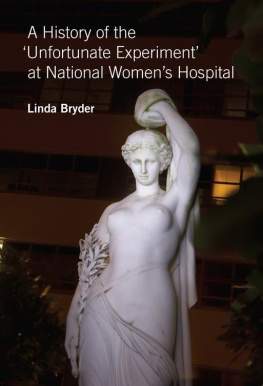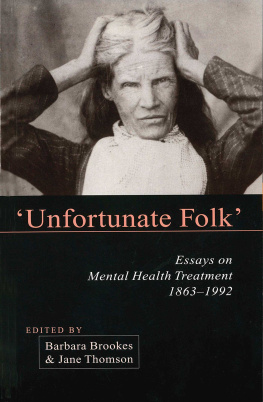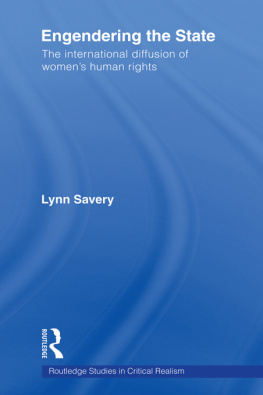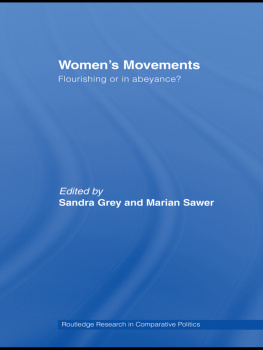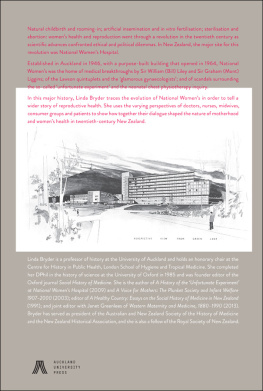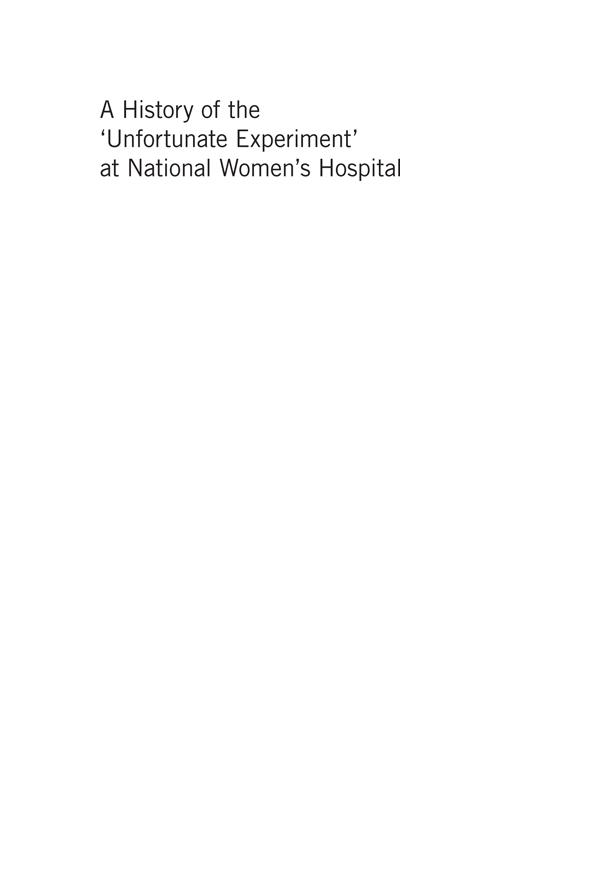Many times during the long journey of discovery that led to the production of this book I wondered whether I should be entering a field which is clearly still so sensitive to so many people. However, I do believe that it is an important story which should be told from the perspective of a medical historian, and this view was reinforced by the feedback from medical historians internationally following seminar presentations on the research. Encouragement came from academics at the Wellcome Unit for the History of Medicine, University of Oxford; the London School of Hygiene and Tropical Medicine; the Oxford Brookes Centre for Health, Medicine and Society, Past and Present; the Manchester Centre for the History of Science, Technology and Medicine, University of Manchester; the Centre for the Social History of Health and Healthcare, University of Strathclyde and the Glasgow-Caledonian University; the Department of Public Health, University of Copenhagen; and members of the Australian and New Zealand Society of the History of Medicine. I wish to acknowledge and thank the Royal Society of New Zealand for financial support for this research through the Marsden Fund.
Individually, I wish to thank Dr John Hood, formerly vice-chancellor of the University of Auckland and then vice-chancellor of the University of Oxford who, during a casual conversation about my research into National Womens Hospital when I was in Oxford, suggested that the Cartwright Inquiry would make an excellent subject for a monograph in its own right. I wish to thank Sir Iain Chalmers, also of Oxford, whose interest was stimulated by inquiries he had received from fellow epidemiologists about my studies and who kindly agreed to read the manuscript. I am grateful to Professor Janet McCalman and Dr Sally Wilde, fellow medical historians, for their incisive comments and feedback, along with the anonymous readers of my manuscript for the publishers. I am particularly indebted to Dr Sam Elworthy, Director of Auckland University Press, and Professor John Pickstone, Wellcome Research Professor at the University of Manchester and editor of the Palgrave Macmillan series in Science, Technology and Medicine in Modern History, for their support, encouragement and useful advice throughout. I also wish to thank my copy editor, Ginny Sullivan, for her careful scrutiny of the manuscript. Among my friends, special thanks go to Peter Nobbs for lending a friendly ear while I was working on this project. Finally I could not have brought this research to fruition without the ongoing support of my family, Derek, Dennis and Martin Dow, to whom I dedicate this book.
1.
Introduction :
An Inquiry into Cervical Cancer
New Zealands National Womens Hospital, situated in Auckland, was set up in 1946, a time when confidence in modern medical science soared throughout the Western world. Medical advances during the Second World War included the development of antibiotic drugs to combat serious infections, as well as blood transfusion and other improvements in surgical techniques which made major operations safer. It was confidently expected that further developments would follow. This was the golden age of medicine. Hospitals, with their modern equipment and laboratories, were associated in the public mind with heroic medical science, and medical practitioners and researchers enjoyed a higher social status than ever before.
In June 1987 Aucklands Metro magazine published what has become a watershed in New Zealands medical history. The Journal of General Practice described it as a bombshell
An Unfortunate Experiment at National Womens was written by Sandra Coney, a journalist and feminist activist, and Phillida Bunkle, a senior lecturer in Womens Studies at Victoria University of Wellington. They made a convincing case against Dr Herbert Green, associate professor of obstetrics and gynaecology at the University of Auckland Medical School, who they believed had caused a number of women to develop cervical cancer from carcinoma in situ (CIS) by withholding conventional treatment in order to study the natural history of the disease.
Coney explained in her prize-winning book published the following year:
A disastrous research programme had been carried out at National Womens Hospital in Auckland and covered up for years. Women with pre-malignant abnormalities in the cells in the neck of the womb had not received conventional treatment for the condition. The statistician had calculated that these women had developed the maiming and potentially fatal invasive cervical cancer at an appalling twenty-five times the rate of women treated conventionally. They had had normal treatment withheld because one doctor, Associate Professor Herbert Green, believed that the abnormal cells were harmless. He argued that the pre-malignant disease, called carcinoma in situ or CIS, did not progress to invasive cervical cancer.
The response to the magazine article was instant and spectacular.
Upon the reports publication, a local Labour MP, Richard Northey, referred to the 1947 Nuremberg Code on patient consent, which had arisen out of Nazi experiments on Jews and the mentally disabled, and declared that it was absolutely atrocious that such ill-treatment should have occurred at National Womens.
A comment by Fertility Action, a feminist group headed by Sandra Coney which had given evidence to the Inquiry, was widely repeated in the press: While the medical profession at National Womens and elsewhere maintained closed
I was in the United Kingdom when the 1987 Metro article appeared, working as a research fellow in the history of science at the Queens College in Oxford where I was resident from 1981 to 1988. A friend had given me a years subscription to Metro so I saw the article when it came out, and like everyone else was horrified by what had taken place in my home town. In mid1988 I took up a lectureship in New Zealand history at the University of Auckland. My first major research project following my return to New Zealand was the history of the Royal New Zealand Plunket Society, a voluntary infant welfare organisation set up in 1907.
While working on this project, I spent some months on sabbatical leave in Oxford. There I took advantage of the extensive run of medical journals and other publications at the Radcliffe Science Library to inform myself of the background into the medical condition that was the subject of the Inquiry carcinoma in situ of the cervix. The literature I accessed there came as a surprise and forced me to revise my own view of the unfortunate experiment and the Cartwright Inquiry. On returning to New Zealand, I followed this up with a careful reading of the Inquiry transcripts and the considerable media coverage. While 72 interviews conducted by Cartwright with patients remain closed files, what happened to these women can be gleaned from lawyer Rodney Harrisons use of their case notes during his cross-examination of Green at the Inquiry, from Judge Cartwrights report and from Sandra Coneys book on the Inquiry. The transcripts of the eleven women who came forward to give evidence publicly, submissions to the Inquiry, and the many letters written to Cartwright, Health Minister Michael Bassett and medical superintendent Gabrielle Collison provide further evidence of patient experience. I quickly decided that the story which emerged merited a book in its own right, as it would threaten to overwhelm a general history of the hospital and its work in reproductive and neonatal health and medicine. In the early stages of researching the general hospital history, I had contracted Dr Jenny Carlyon to conduct interviews with many of those involved with the hospital. The mass of written material concerning the Cartwright Inquiry made it unnecessary to conduct further or more focused interviews. For this study I draw primarily on written records, both published and unpublished, which are extensive as well as extremely varied. Before embarking on the history, I knew very little about the dramatis personae in this story. The narrative which unfolded, written from the perspective of a social historian of medicine, is more complex than had hitherto been apparent and sheds new light on what is undoubtedly an important episode in New Zealands social and medical history.

